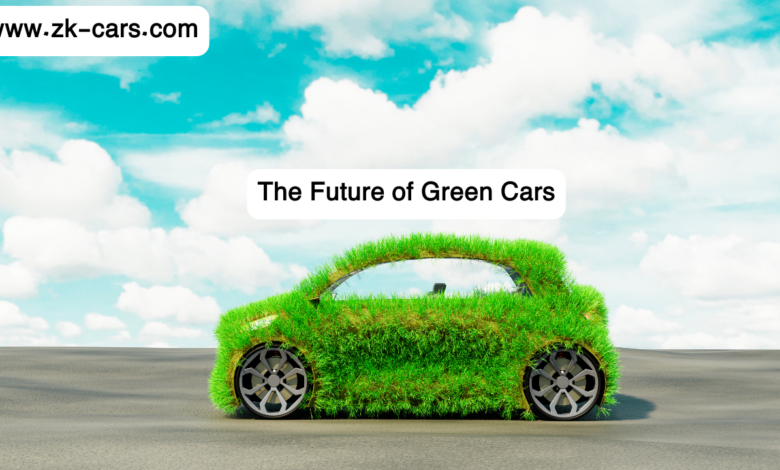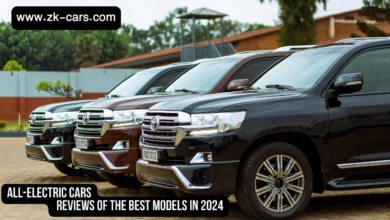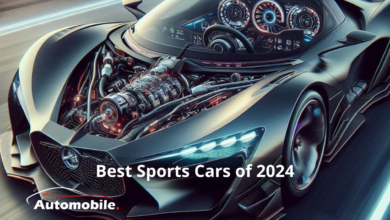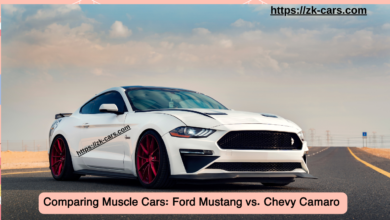
As global awareness around climate change grows, the future of green cars has never looked more promising. We are witnessing a remarkable shift towards sustainable transportation, driven by technological breakthroughs in electric vehicles (EVs), hydrogen fuel cells, and renewable energy integration. These innovations are not only reshaping the auto industry but also positioning green cars as a primary solution to reducing carbon emissions.
*📺 القناة :beIN SPORTS HD 1*In this comprehensive article, we will explore the latest innovations in the world of green cars, covering electric propulsion technologies, the potential of hydrogen fuel, improvements in battery storage, and advancements in autonomous driving. These developments indicate that the future of green cars is not just an idealistic vision but a tangible, fast-approaching reality.
1. Electric Vehicles: The Backbone of Green Cars
1.1. The Rise of Electric Cars
Electric vehicles (EVs) have quickly moved from niche products to mainstream offerings. With zero tailpipe emissions, lower maintenance costs, and impressive performance, EVs are now seen as the backbone of the green car revolution. Key players like Tesla, Nissan, and BMW have paved the way for mass adoption, and with governments worldwide pushing for stricter emission standards, the trend is only set to accelerate.
1.2. The Evolution of EV Batteries
One of the major hurdles for electric cars has always been battery range and charging time. However, recent innovations in solid-state batteries and lithium-ion technology are changing that landscape. Solid-state batteries offer higher energy density, faster charging times, and improved safety compared to traditional lithium-ion batteries. Furthermore, breakthroughs in battery recycling and the use of sustainable materials are making EV production more eco-friendly.
1.3. Charging Infrastructure Expansion
The charging infrastructure for EVs is rapidly expanding, with public and private initiatives driving the development of ultra-fast charging networks. These stations can now charge an EV to 80% in under 20 minutes, making long-distance travel more convenient. Additionally, wireless charging technology is being developed, which could one day allow cars to charge while on the road.
2. Hydrogen Fuel Cells: The Next Big Thing?
2.1. How Hydrogen Fuel Cell Cars Work
While electric cars dominate the current green car market, hydrogen fuel cell vehicles (FCVs) are seen as the next frontier. Hydrogen fuel cells generate electricity by combining hydrogen with oxygen, emitting only water vapor as a byproduct. This makes them a truly zero-emission alternative to traditional internal combustion engines.
2.2. Advantages Over Electric Vehicles
Hydrogen fuel cell cars have some distinct advantages over battery-powered EVs. For starters, they can be refueled in a matter of minutes, similar to conventional gasoline vehicles. Moreover, FCVs offer a longer driving range, making them more practical for long-haul journeys. Toyota, Hyundai, and Honda are among the automakers leading the charge in hydrogen technology, with models like the Toyota Mirai and Hyundai Nexo already on the market.
2.3. Challenges to Overcome
Despite their potential, hydrogen cars face significant challenges. The production of green hydrogen—which is made using renewable energy—remains costly, and the refueling infrastructure is still limited. However, with increased investment and research, many believe that hydrogen cars could complement electric vehicles in the future.
3. Renewable Energy and Its Role in Green Cars
3.1. Integrating Solar Power
The integration of solar panels into cars is another exciting development in the green car sector. While solar power alone is not enough to fully charge a car, it can extend the driving range of electric vehicles by capturing energy from the sun. Companies like Lightyear are developing solar-powered cars, which are designed to be highly efficient and can generate energy even on cloudy days.
3.2. Wind Energy for Green Car Manufacturing
It’s not just the cars themselves that are going green—the manufacturing processes behind them are also evolving. Leading automakers are investing in renewable energy sources such as wind and solar power to run their factories. Tesla’s Gigafactories, for example, are designed to operate on 100% renewable energy, reducing the carbon footprint of electric car production.
4. Autonomous Driving: Reducing Emissions Further
4.1. Autonomous Vehicles and Green Cars
The future of green cars is not just about how they are powered but also about how they are driven. Autonomous driving technology is rapidly advancing, and it is expected to have a profound impact on fuel efficiency and emissions reduction. Autonomous vehicles (AVs) are designed to drive more efficiently than humans, minimizing unnecessary acceleration and braking, which reduces energy consumption.
4.2. EVs and Autonomous Driving
Electric cars are likely to be the first to fully integrate autonomous driving systems. With companies like Tesla already offering Autopilot and Full Self-Driving (FSD) features, the synergy between electric propulsion and autonomous driving is clear. In a future where most cars are electric and autonomous, we could see a significant reduction in urban congestion and emissions.
5. The Role of Government Policies and Incentives
5.1. Stricter Emission Regulations
Governments worldwide are playing a crucial role in shaping the future of green cars through stricter emission regulations. The European Union, for instance, has set ambitious targets to reduce CO2 emissions from new cars, which has spurred automakers to accelerate their shift towards electric and hydrogen vehicles.
5.2. Incentives for Green Car Buyers
Many countries are offering financial incentives to encourage consumers to switch to green cars. These include tax credits, rebates, and subsidies for purchasing electric or hydrogen-powered vehicles. In some regions, green car owners also benefit from perks such as free parking and access to carpool lanes.
6. Conclusion: The Road Ahead for Green Cars
The future of green cars is bright, driven by rapid advancements in electric vehicle technology, the potential of hydrogen fuel cells, and the integration of renewable energy sources. While there are still challenges to overcome, particularly regarding charging infrastructure and hydrogen production, the innovations we are seeing today will pave the way for a cleaner, greener automotive industry. As governments and automakers continue to invest in sustainable technologies, the widespread adoption of green cars is inevitable.
Frequently Asked Questions
1. What is the difference between electric cars and hydrogen fuel cell vehicles?
Electric cars run on battery power, while hydrogen fuel cell vehicles generate electricity through a chemical reaction between hydrogen and oxygen. Both are considered zero-emission vehicles.
2. How long does it take to charge an electric vehicle?
Charging times vary depending on the type of charger. A standard home charger can take 8-10 hours for a full charge, while ultra-fast public chargers can charge up to 80% in under 30 minutes.
3. Are hydrogen cars more expensive than electric cars?
Yes, currently hydrogen cars are more expensive due to the high cost of hydrogen production and the limited availability of refueling stations. However, prices are expected to decrease as technology improves.
4. Will green cars eventually replace traditional gasoline-powered cars?
With increasing environmental concerns and government regulations, green cars are expected to become the dominant mode of transportation. However, the transition will take time as infrastructure and technology evolve.




